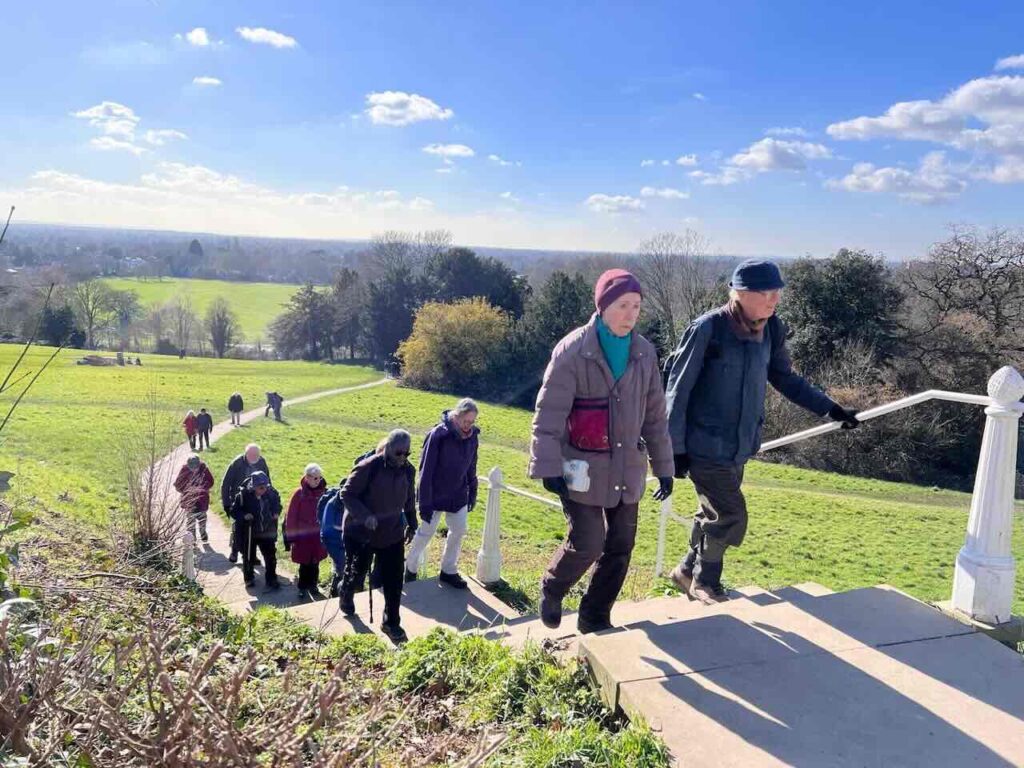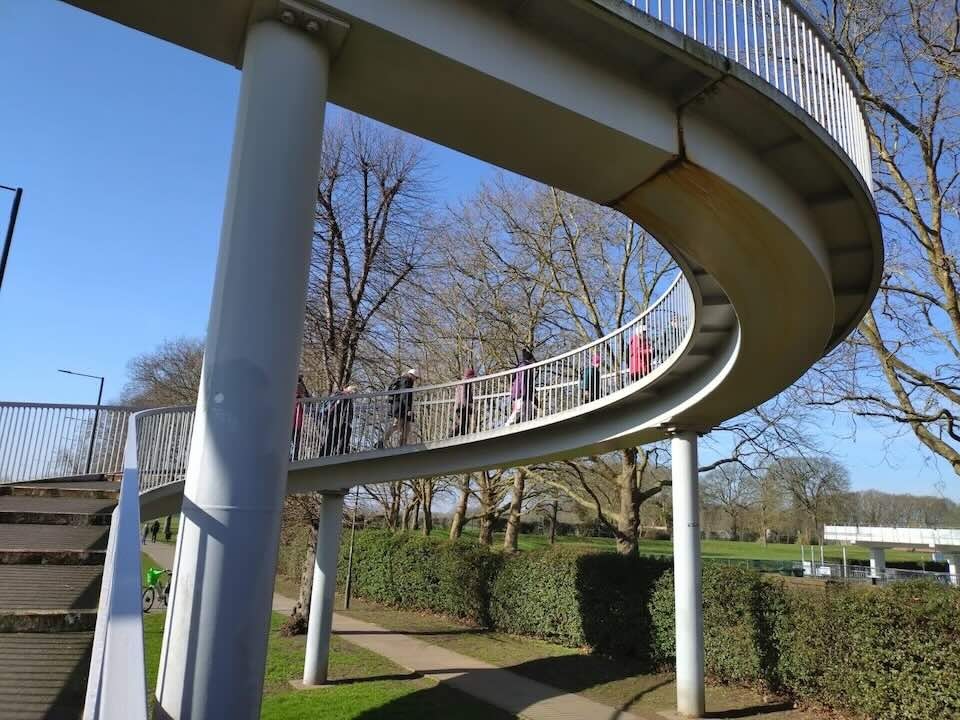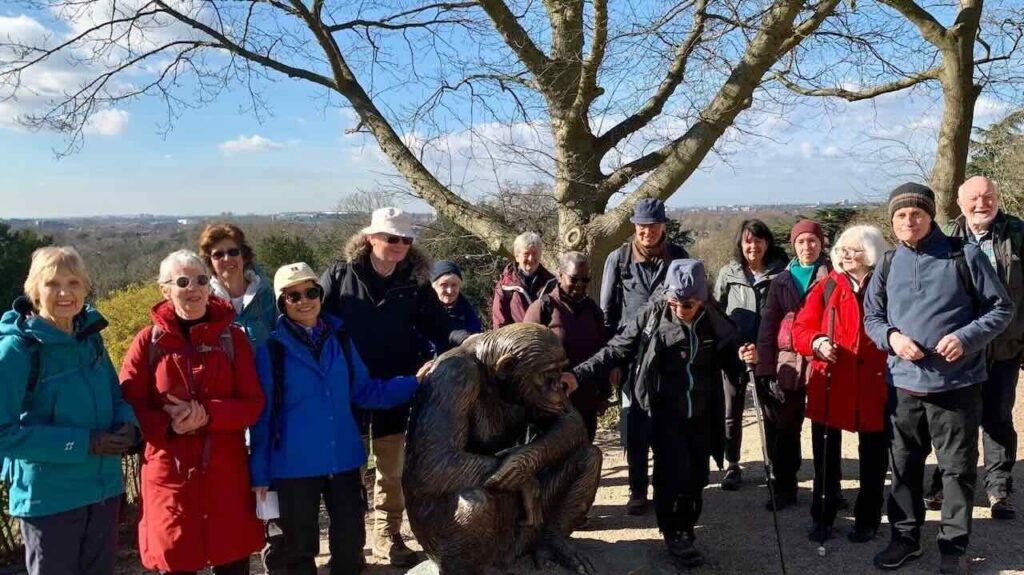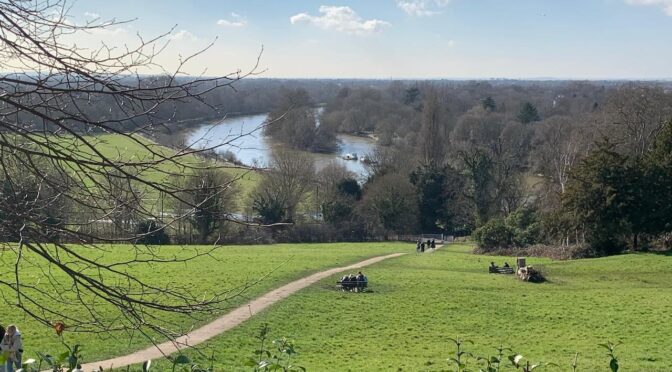It was a chilly, foggy, start at Isleworth but the sun was soon out to cheer us on our walk. Isleworth was once a well-cultivated farming and trading settlement, the boundary stretching from the Middlesex bank of the River Thames, westward to the centre of Hounslow and as far as Southhall in 1066. Much of Isleworth became orchards and market gardens in the 19th Century. Many royal and noble houses were built there including Syon House.
The leader welcomed 20 polyrambers at Isleworth station where we started our walk to Old Isleworth. We walked along a street with rows of workmen‘s cottages which were built for workers of the famous Pears soap factory. The Red Lion Pub in the same street has won the local CAMRA pub of the year prize four times since 2003. It was one of only three buildings in Hounslow to be recognised as ‘assets of Community value’. Then we walked through the Silverhall Park which sits either side of the Duke of Northumberland River. We entered Mill Plat, one of the oldest paths giving access to the Flour Mill built in 1635. The Ingram’s Almshouses built in 1664 are the oldest almshouses in the Borough.
Apparently there are often up to 20 herons resting in the area during night time. We looked at Warkworth House built in 1866, later becoming West Middlesex hospital accommodation for nurses. Now new houses have been built in the complex. Then the Mill Bridge : over the Duke of Northumberland’s River which was man-made in the 16th century to provide water for the Isleworth Flour Mill. The Tudor mill was made of wood and was destroyed by fire in 1795 and replaced by a brick built structure. It closed in 1934 and was demolished in 1941. Tolson’s Almshouses for the poor is located where the Duke of Northumberland River meets the Thames, and these are now flats.
There were many water puddles along the route after lots of rain over the past few days. The group enjoyed lovely views of the Thames. We followed the Capital Ring/Thames Path on the north side of the Thames, crossed Richmond Lock then we were walked through the Old Deer Park. We crossed the busy A316, to the town centre, through two alley ways and passed the house where Virgina Wolf lived for 9 years. We made our way along the Vineyard Passage, St. Matthias Church ( a victorian gothic style Grade II listed building) to the top of Richmond Hill. Finally, we arrived at our lunch stop in Terrace Gardens where some had their picnic lunch and some lunched at the Hollyhock Cafe.
After lunch 17 polyramblers continued walking back up to the top of the Hill where we enjoyed fantastic views over the Thames and further afield. It was not long after entering Richmond Park that we reached the Poet’s Corner Pollinator Garden and the John Beer Laburnum Walk. It was a fine clear afternoon and we spent some time at King Henry VIII’s Mound marvelling at the unrestricted view of St. Paul’s Cathedral.
We carried on walking towards Ham gate. I had promised there would be some mud for the group to enjoy, so we took the path to the left side of Ham Common instead of the formal path on the right. After walking for a mile, we arrived at Teddington Lock. One member decided to finish his walk there. The remaining 16 carried on along the Thames Path towards Kingston and we had a water stop under the 64 year old replacement of Half Mile Tree, a sign marking the official ‘half mile’ to Kingston.
Overall we had a very rewarding day with glorious sunshine that made the walk very enjoyable. This section of the Thames is thoroughly recommended for anyone seeking a metropolitan ramble with plenty of historical interest.
Ida
Photos by Nita, Les and Ida






